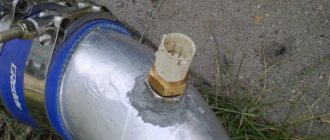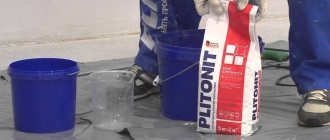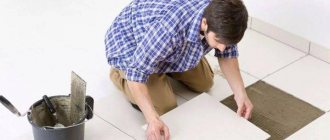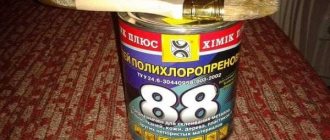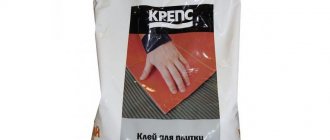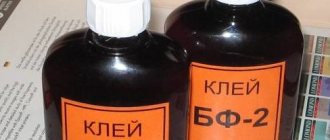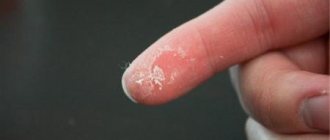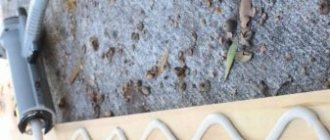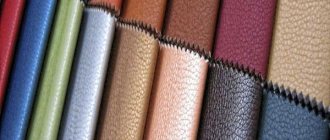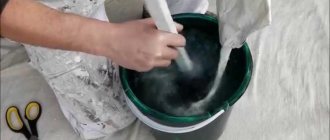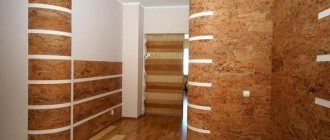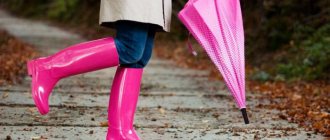Gluing various parts becomes necessary in different situations; craftsmen have been choosing BF4 glue for this purpose for many years, which copes with the task of creating reliable and strong adhesion of various materials to each other at a high level. The adhesive solution has several varieties and is used in a variety of areas. A detailed description of BF glue and an explanation of why it is so popular will be given below.
Compound
Phenolic butyral is used for gluing metal, plastic, fabric and other types of materials. At the same time, the resulting seam is able to withstand various environmental factors, including chemical exposure. The seam is particularly durable and reliable. The seams are frost-resistant and elastic, with electrical insulating properties.
If you use it for gluing metal products, you also receive additional surface protection from rust formation.
The production of BF4 glue is carried out in accordance with GOST 12172 2021. The main component of BF glue is polyvinyl butyral or polyvinyl acetal. Digital marking indicates the quantitative percentage of the content of a given substance. It is responsible for the degree of elasticity of the seam formed. The level of adhesion strength depends on the bending index; the higher it is, the lower the strength. Other elements are also added to the composition: phenol-formaldehyde or phenol-polyvinyl acetate resin, ethyl alcohol, which serves as a solution diluent (it is possible to use chloroform or acetone instead).
Glue is a flammable substance, so it can only be used away from open sources of fire, in compliance with safety rules.
The color of the adhesive solution can be different, shades vary from yellow to red.
The main component of BF glue is polyvinyl butyral or polyvinyl acetal.
Composition of BF adhesives
The manufacturing technology of BF adhesives is regulated by GOST 12172-74.
The abbreviation “BF” encodes the main component of the line of adhesives of this brand - polyvinyl buteral (or polyvinyl acetal). The full name sounds like “butyraphenol glue”.
Numerical designations show what percentage the share of the main component is in the dry matter. The elasticity of the material depends on this. Depending on the brand, the amount of these components varies.
The increase in their proportion in the composition is directly proportional to plasticity and inversely proportional to the strength of the dried adhesive layer.
The adhesives are based on resins dissolved in ethyl alcohol, chloroform or acetone - phenol-formaldehyde or phenol-polyvinyl acetate.
To dilute BF-6 glue, only alcohol is used. The adhesives have a yellowish, reddish, brown or brown color. These thick solutions should be kept away from fire - they are highly flammable.
Applications and characteristics
The area of use of the adhesive composition is diverse; it is distinguished by its ability to connect ceramic, glass, plastic, metal, wood, leather and ebonite products. Resistance to vibration and bending effects of the seam, and to mechanical shocks is noted. High strength indicators make it possible to use it to glue different types of materials together.
Thus, BF4 is capable of gluing metal to non-metal.
It is used for household purposes and for a number of other areas. These include:
- Space sphere;
- Aircraft and shipbuilding;
- Paint and varnish industry, woodworking;
- When creating ceramic and glass products (cannot be used for items in contact with food);
- Medical field;
- For electronics, instrument making;
- Textile and chemical fields;
- Metallurgical and oil and gas fields.
The substance can be used even if operating conditions involve further exposure to alkalis and low temperatures. The ability of electrical insulation allows use when working with electrical appliances.
High strength indicators make it possible to use it to glue different types of materials together.
What does glue consist of?
The ability to reliably connect various materials is explained by the composition of this substance. BF-4 glue is manufactured in accordance with GOST 12172-74, as well as other varieties of this line. The main component in the composition is polyvinyl butyral.
The number that comes after the letters “BF” indicates the percentage of polyvinyl butyral in the dry mixture. It gives the glue elasticity.
In addition to the main component, the composition contains additional substances. Additional components improve elasticity, however, deteriorate its strength. These include:
- Ethyl alcohol is used as a solvent.
- Phenolic polyvinyl acetate resin.
The liquid is a thick mass that can have yellow, brown, red and brown shades. The technical characteristics of BF-4 glue depend on its composition.
Applications and characteristics
Used for joining various materials. These include wood, glass, ceramics, metals (non-ferrous and ferrous), leather and various polymers.
Another important feature of this composition is the ability to combine metals with non-metals.
Thanks to this characteristic and properties, BF-4 glue has a wide range of applications. This can be the repair of clothing, furniture, electronics, various household appliances and industrial equipment.
Glue resistance to aggressive environments
BF-4 glue is resistant to acids, alkalis and low temperatures. Due to this, it is used when repairing containers for storing reagents; it is used to connect parts at low ambient temperatures.
Glue resistance to aggressive environments
Bf4 manifests itself as a connecting substance that does not react to the effects of alkalis, and it is also not afraid of low-temperature conditions. This allows it to be used for repair work with reagents. Repairs can be carried out at low temperatures, which expands its scope of application several times.
BF-4 manifests itself as a connecting substance that does not react to the influence of alkalis, and it is also not afraid of low-temperature conditions.
Specifications
To determine whether a product can cope with a certain task, you need to understand its technical characteristics. GOST glue pencil BF 4 determines its characteristics; during production they work in accordance with GOST 12172-74, the following characteristics of the glue are prescribed:
- The degree of viscosity is 30-60c;
- Dry residue is 10-13%;
- Maximum shear strength - 19.6 MPa (200 kgf/sq.cm);
- The permissible degree of bending of the adhesive seam, when it is completely dry, is no more than a millimeter;
- Average consumption – 150-200g/sq.m. m;
- The dried layer does not crack;
- Rust does not form on the metal in the area where the composition is applied.
The guarantee of maintaining the specified characteristics applies to work at temperatures from +20 degrees.
It is possible to use a hot gluing technique, this improves the strength of the connection. The seam itself does not lose its flammable properties.
It is possible to use a hot gluing technique, this improves the strength of the connection.
Operating instructions
The glue manual includes a preparatory step. Start by cleaning the parts to be glued. It is necessary to get rid of the remaining old glue, remove all types of contaminants, and if necessary, degrease the surface with a suitable product. You should also sand the parts to improve adhesion.
The gluing instruction can be carried out using two different methods:
- Hot technology;
- Cold technology.
When the first technology is selected, a layer of glue is applied to the surface of the parts, and they are left in this state for 60 minutes. Afterwards, the parts are compressed together, a high-temperature effect is created from +150 to +170 degrees, its duration should be forty minutes.
The cooling process should occur naturally; this stage should not be accelerated.
A layer of glue is applied to the surface of the parts, and they are left in this state for 60 minutes.
When working with textiles, the fabrics are wetted and wrung out, then they proceed to lubricating the gluing area with glue, and leave them for an hour. After this time, the pieces of fabric can be glued together; they should then be ironed with a heated iron. You can start using the product in 5-6 hours.
You can start using the product in 5-6 hours.
With the second method, the first layer is applied to the parts, wait 20-25 minutes, and the second layer is applied. Then you can attach the parts together. A firm squeeze is applied. To ensure that the adhesive layer dries completely, the product is not touched for about 24 hours. You should work in a heated room with good ventilation. The best tool to use is a brush.
If there is excess glue, it can be wiped off with alcohol; this must be done quickly so that the glue does not have time to dry. After 15-20 minutes, wipe the area a second time.
To ensure that the adhesive layer dries completely, the product is not touched for about 24 hours.
Instructions for use
With the hot gluing method, the connection is stronger.
Before applying the adhesive, the surface is cleaned of dirt: sanded with sandpaper and degreased. Next, use one of the application methods: hot (thermal) or cold. With the hot method:
- Apply an even layer of product to the work surface to prevent smudges. It is important not to leave empty spaces or gaps.
- After 60 minutes, apply a second layer of fixing agent and dry the surface for another 55-60 minutes.
- Next, the parts are compressed together with a special clamp and placed in an oven heated to 180°C for 60 minutes.
- Leave the product in a room at room temperature to allow gradual and natural cooling to occur.
When gluing textiles, the fabric is wetted and wrung out. Apply the adhesive and leave for 1 hour. Afterwards, the parts are connected to each other, and the top is ironed with a heated iron. The final hardening of the seam occurs after 5-6 hours.
With the cold method, the glue is applied twice with an interval of 25 minutes. Afterwards, the surfaces are combined and left for a day in a ventilated, warm room. It is advisable to apply the fixative using a synthetic bristle brush.
Precautionary measures
Work with the substance must be carried out away from fire , since the solvents in its composition have a high fire hazard. To avoid an allergic reaction and health problems, you should wear gloves and a respirator, and ventilate the room after applying the substance. Transportation is carried out in compliance with safety measures, in sealed containers.
Question to the expert
How to remove excess?
The adhesive composition is easily removed from the surface before final drying. This can be done with a sponge soaked in alcohol - a medical solution or vodka will do. Removal of excess is carried out twice. The second treatment is carried out 20 minutes after the first.
Glue storage
Closed packages of glue must be stored away from flames, heat sources, and children.
The shelf life of the product is 8 months from the date of production. To preserve its beneficial properties, BF 4 glue should be kept in a tightly closed container and sudden temperature changes should be avoided. The room temperature should be +25°C.
Safety precautions
The use of the adhesive solution is only possible away from open sources of fire, because the product is a flammable substance. The master must protect himself to avoid health problems. To do this, you should wear a respirator and work with protective gloves. Good ventilation is created in the room. Transportation of the product must be carried out in compliance with safety measures; the container must be tightly closed.
Good ventilation is created in the room.
How to remove glue
Work can often be accompanied by the composition getting into areas that should not have been glued together. It is permissible to remove the substance from the artist’s skin and clothing using alcohol. Double cleansing is necessary. After 20 minutes have passed after the first wipe, repeated cleaning is carried out.
If alcohol is not on hand, you can use vodka. It is possible to remove glue from fabrics using thinners, but they must be used carefully.
It is permissible to remove the substance from the artist’s skin and clothing using alcohol.
Glue BF-6 10g tube
Dosage form
Solution for external use [alcohol].
Composition per 100 g
Active substance:
Phenol-formaldehyde resin (bakelite varnish per dry substance) – 1.65 g
Excipients:
Polyvinyl butyral (polyvinyl butyral) – 9.7 g
Dibutyl phthalate – 3.5 g
Castor oil – 1.75 g
Rosin – 0.85 g
Ethyl alcohol 95% – 82.55 g
Description
Transparent or slightly cloudy liquid from light yellow to reddish color.
Pharmacotherapeutic group
Antiseptic.
ATX code
: D08AE.
Pharmacological properties
BF-6 glue has a wound-healing and antiseptic effect. It is used as an insulating agent and promotes the healing of small skin wounds due to the formation of an insulating film on their surface. The film is elastic and resistant to mechanical and chemical influences.
Indications for use
Hypersensitivity to the components of the drug, children under 1 year of age.
Use during pregnancy and breastfeeding
It is possible to use the drug.
Directions for use and doses
Externally. Before applying the drug, the skin area is thoroughly cleaned of contaminants. Use a cotton or gauze swab to stop the bleeding and dry the area to be covered with glue. The drug is applied in a thin, even layer directly to the damaged surface, covering the surrounding healthy tissue. If the integrity of the film is damaged, a new film is applied on top of it. The film forms within 2-5 minutes after applying the drug and is firmly held on the skin.
Overdose
With this method of application it is practically impossible.
Side effects
Burning at the site of application, allergic reactions.
Interactions with other drugs
No data.
special instructions
The use of the drug does not affect the performance of potentially hazardous activities that require special attention and quick reactions (driving vehicles, working with moving mechanisms).
Release form
Solution for external use [alcohol].
10 g in orange glass bottles, sealed with polyethylene stoppers and plastic screw caps.
10 g in aluminum tubes with polyethylene caps.
Each tube or bottle, along with instructions for use, is placed in a cardboard pack.
Storage conditions
In a place protected from light at a temperature not exceeding 25 oC, away from sources of heat and open flame. Keep out of the reach of children.
Best before date
4 years. Do not use after the expiration date.
Conditions for dispensing from pharmacies
Available without a prescription.
Possible analogues of this brand
It is difficult to find an analogue of adhesive solutions of the BF series. There are no such reliable and durable products on the market. Replacement is possible only with “Super Cement”, which is available in specialized stores.
Epoxy adhesives have similar characteristics, but they are much more difficult to work with. Therefore, BF4 has long remained the best tool for producing high-strength connections between materials of different types, which can be worked with in everyday conditions.
There are other adhesives with the abbreviation BF, which have different markings; they are suitable for different purposes, which are prescribed in the instructions. So there is a special medical glue that is used to “connect” abrasions and wounds.
Replacement is possible only with “Super Cement”, which is available in specialized stores.
Cautions and contraindications
The components of BF include alcohol or acetone and formaldehyde resins, so when working with it you must follow safety precautions:
- The glue is very flammable, so it is forbidden to work with it near open flame sources.
- To avoid allergic reactions when working with glue, use gloves.
- After application, thoroughly ventilate the room.
- BF-6 is not recommended for children under one year of age. Also, it should not be applied to inflamed, purulent open wounds.
Storage
Storage must be carried out taking into account the flammability of the substance. In the room where it will be stored, the temperature should not exceed +25 degrees, and there should also be no open sources of fire. Sudden changes in temperature are not acceptable.
The selected location must be out of reach of children; the adhesive container must be tightly closed to ensure sealed storage. The shelf life is 8 months from the date of manufacture of the adhesive solution at the factory.
In the room where it will be stored, the temperature should not exceed +25 degrees.
Bf4 series glue is an excellent option for gluing a variety of parts. Many people choose it because of its ease of use as well as the high level of durability it provides. This strength is due to its unique composition; it is produced in accordance with GOST. To date, no equivalent analogues of glue have been invented. And it has not lost its popularity for many years.
Glue BF-4 (phenol-formaldehyde)
Thermosetting adhesive BF-4 is a combined butvar-phenolic adhesive. Butvar (polyvinyl butyral) is obtained by condensing polyvinyl alcohol with butyraldehyde, and then mixing alcohol solutions of butvar and phenol-formaldehyde resin.
COMPOSITION: BF-4 glue is an alcohol solution of polyvinyl butyral with resol phenol-formaldehyde resins (ratio of butvar and resin 15:85) in the RFG GOST 12708-77 solvent (mixtures of isopropyl, butyl or isobutyl alcohols).
Bonding technology:
- Sand the surfaces to be glued and degrease them.
- Apply glue with a brush. Number of layers 1(2).
- Connect surfaces.
Drying temperature is possible up to 140-150ºС
Drying time (at 140ºС) 60 min.
Pressure 0.5÷0.6 MPa
Glue consumption
for each layer 150-200 g/m2.
“HOT” gluing method : For metals, ceramics, glass, wood: clean and degrease the surfaces to be bonded. Then apply an even layer of glue on them and dry for 1 hour. After this, compress the parts tightly, maintain at a temperature of 130–140°C for at least 40 minutes and slowly cool to room temperature.
For fabrics: moisten fabrics with water and wring out. Apply a thin layer of glue, dry for 1 hour, combine and carefully iron through a thin cloth. The product can be used after 5 hours.
“COLD” gluing method : Thoroughly clean and degrease the surfaces to be glued, apply an even layer of glue to them. After 15–20 minutes, apply a second layer and after 1–2 minutes press firmly. The product can be used within a day.
Safety requirements
:
BF glue is a flammable and explosive substance. This is due to the presence of solvents such as isopropyl and butyl alcohol, which are flammable liquids. At 160ºC, gaseous substances may be released from the glue: phenol, formaldehyde, ammonia, butyraldehyde.
Identification of hazard(s).
The degree of danger of chemical products in general. - According to GOST 12.1.007-76 Hazard class according to the degree of exposure to humans - 3, the substance is moderately dangerous in terms of the toxicological properties of the components.
Storage conditions:
Store the glue in a hermetically sealed container at a temperature of 0 to 25 ºС.
Warranty period of storage
glue from the date of manufacture - at least
8
months.
After the warranty period has expired, the adhesive can be used for its intended purpose after checking its quality.
